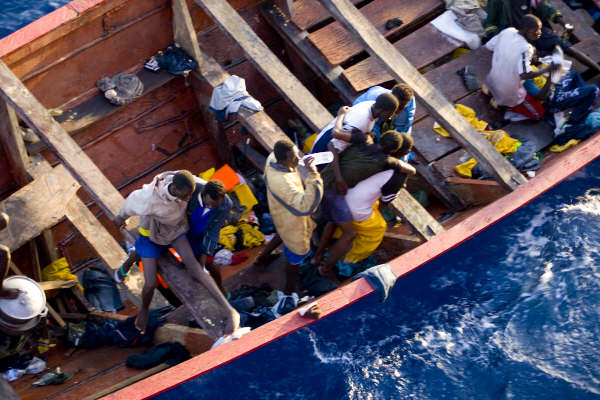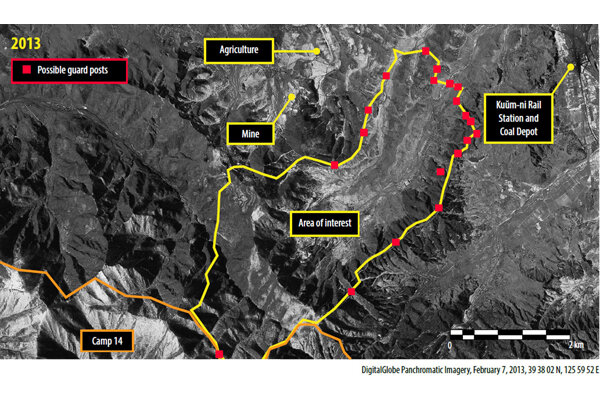CAMP H.M. SMITH, Hawaii — The U.S. Pacific Command (USPACOM) detected and tracked what we assess was a North Korean missile launch at 11:42 a.m. Hawaii-Aleutian Standard Time, April 4. The launch of a single ballistic missile occurred at a land-based facility near Sinpo.
The missile was tracked until it landed in the Sea of Japan at 11:51 a.m.
Initial assessments indicate that the type of missile was a KN-15 medium-range ballistic missile (MRBM).
USPACOM is fully committed to working closely with our Republic of Korea and Japanese allies to maintain security.
The North American Aerospace Defense Command (NORAD) determined that the missile launch from North Korea did not pose a threat to North America.

Specialists Think North Korea Poses Nuclear Threat to Hawaii
Nuclear arms experts think North Korea already has, or soon will have, the ability to target Hawaii with a nuclear-tipped intercontinental ballistic missile with possibly about the same destructive force as the bombs dropped on Hiroshima and Nagasaki.
Warnings are mounting apace with that growing threat.
“North Korea’s unprecedented level of nuclear testing and ballistic missile development offers a sobering reminder that the United States must remain vigilant against rogue nation-states that are able to threaten the homeland,” Air Force Gen. Lori Robinson, who heads the North American Aerospace Defense Command, told a congressional committee Thursday.
In Hawaii a profusion of four-star military commands — including U.S. Pacific Command, which oversees U.S. military activity over half the globe — makes Oahu a strategic and symbolic target. The threat from an unpredictable North Korea, in turn, is prompting a revisitation of some old Cold War practices that until recently seemed laughable.
Duck and cover? Still there in the form of “shelter in place,” state officials say.
Nuclear fallout shelters? In 1981, Oahu had hundreds of them. The Prince Kuhio Building could hold 14,375 people — not because it has a secret underground bunker, but because its concrete parking structure could be used as shelter.
“Each one of those facilities had to be surveyed for how much concrete density [was present],” said Toby Clairmont, executive officer of the Hawaii Emergency Management Agency, the successor to Civil Defense. “And they had to be equipped, so they put medical kits in them, food, sanitary kits, all that kind of stuff.”
As time went on, funding for those provisions stopped, and the stocks were disposed of because they became too old, Clairmont said. In the majority of cases, existing fallout shelter markings are out of date and no longer applicable.
Alternatively, the U.S. military would try to shoot down an incoming North Korean ICBM with ground-based interceptors in Alaska and California, although the $36 billion system was rated by the Pentagon in December as having low reliability.
With the collapse of the Soviet Union, ICBMs in the late 1990s came off Hawaii Emergency Management’s threat list of mostly natural hazards. Terrorism was added, and in 2006 the state practiced for a half-kiloton explosion in Honolulu Harbor that resulted in up to 8,000 casualties with injuries or radiation.
A new threat
President Donald Trump, who met last week with Chinese President Xi Jinping in Florida, has warned that the United States might take unilateral action against North Korea unless China does more to rein in its pugnacious neighbor. He did not mention a pre-emptive first strike per se.
Such a first strike presumably would take out the fixed launch sites at Sohae and Tonghae, but North Korea is also believed to have road-mobile launchers that could survive to retaliate — if they actually work.
With North Korea emerging as a new threat, state Emergency Management Administrator Vern Miyagi said it’s time to update the previous plans.
“If you were to ask me what is the status of North Korea, and is [a missile attack] a high probability — no, it’s a low probability,” said Miyagi, a retired Army two-star general who served at the Pacific Command as senior adviser for military support to civil authorities operations and Reserve and National Guard affairs.
“But then, so, we have to keep a lookout for that [threat]. That’s why we’re talking about updating the plan. It’s an awakening. Maybe we should get involved with” fallout shelters again and identify where still-usable shelters are located, he said.
Fallout protection exists to some degree in any building, but it is most effective in heavy concrete buildings and underground structures, he said.
The agency does monthly tests with the Pacific Command using secure communications, Miyagi said. The advice in the event of a missile attack is still to duck and cover and “get into a substantial building,” he said.
“The bottom line in our plan right now is close coordination with Pacific Command, the military side, so that we understand what’s happening, and we can prepare for it with what we have — and what we have right now is very thin,” Miyagi said.
Looking for a solution
During the Cold War, the state envisioned moving hundreds of thousands of Oahu residents to the neighbor islands if things heated up with the Soviet Union. However, a North Korean ICBM could reach Hawaii in under 20 minutes with no warning, experts say.
Robinson, the North American Aerospace Defense commander, said 2016 was “one of North Korea’s most active years in terms of nuclear weapon and missile program development in pursuit of weaponizing a nuclear ballistic missile capable of reaching the United States.”
Riki Ellison, chairman of the nonprofit Missile Defense Advocacy Alliance, is among a growing number of voices calling for “operationalizing” the Aegis Ashore facility on Kauai in emergencies to be able to shoot down North Korean missiles. Right now, it’s used for missile defense testing only.
Ellison said the new SM-3 Block IIA missile, which is expected to have ICBM shoot-down capability, is a “critical asset required for the region and Hawaii.”
“For U.S. homeland defense, the emergency operational activation of the Aegis Ashore site, to include the AN/TPY-2 radar at the Pacific Missile Range Facility,” is needed in the short term, Ellison said in a release.
In 2015, Adm. Bill Gortney, then commander of North American Aerospace Defense, said, “Our assessment is that they [North Korea] have the ability to put … a nuclear weapon on a KN-08 [missile] and shoot it at the homeland.”
Jeffrey Lewis, director of the East Asia Nonproliferation Program and founding publisher of Arms Control Wonk.com, said the road-mobile KN-08 hasn’t been flight-tested yet.
“This is a very important caution because an ICBM that has never been tested is very unreliable,” he said in an email. If it works, it can probably hit targets throughout the U.S., he said.
North Korea claimed that its last nuclear test validated a standardized warhead of at least 10 kilotons for its long-range missiles, but it “may be significantly more than that,” Lewis added. Ellison, with the Missile Defense Advocacy Alliance, maintains North Korea might have a miniaturized warhead around 20 kilotons.
The atomic bomb dropped on Hiroshima in 1945 was 15 kilotons, while a 20-kiloton device was detonated over Nagasaki.
This article is written by William Cole from The Honolulu Star-Advertiser and was legally licensed via the Tribune Content Agency through the NewsCred publisher network.



